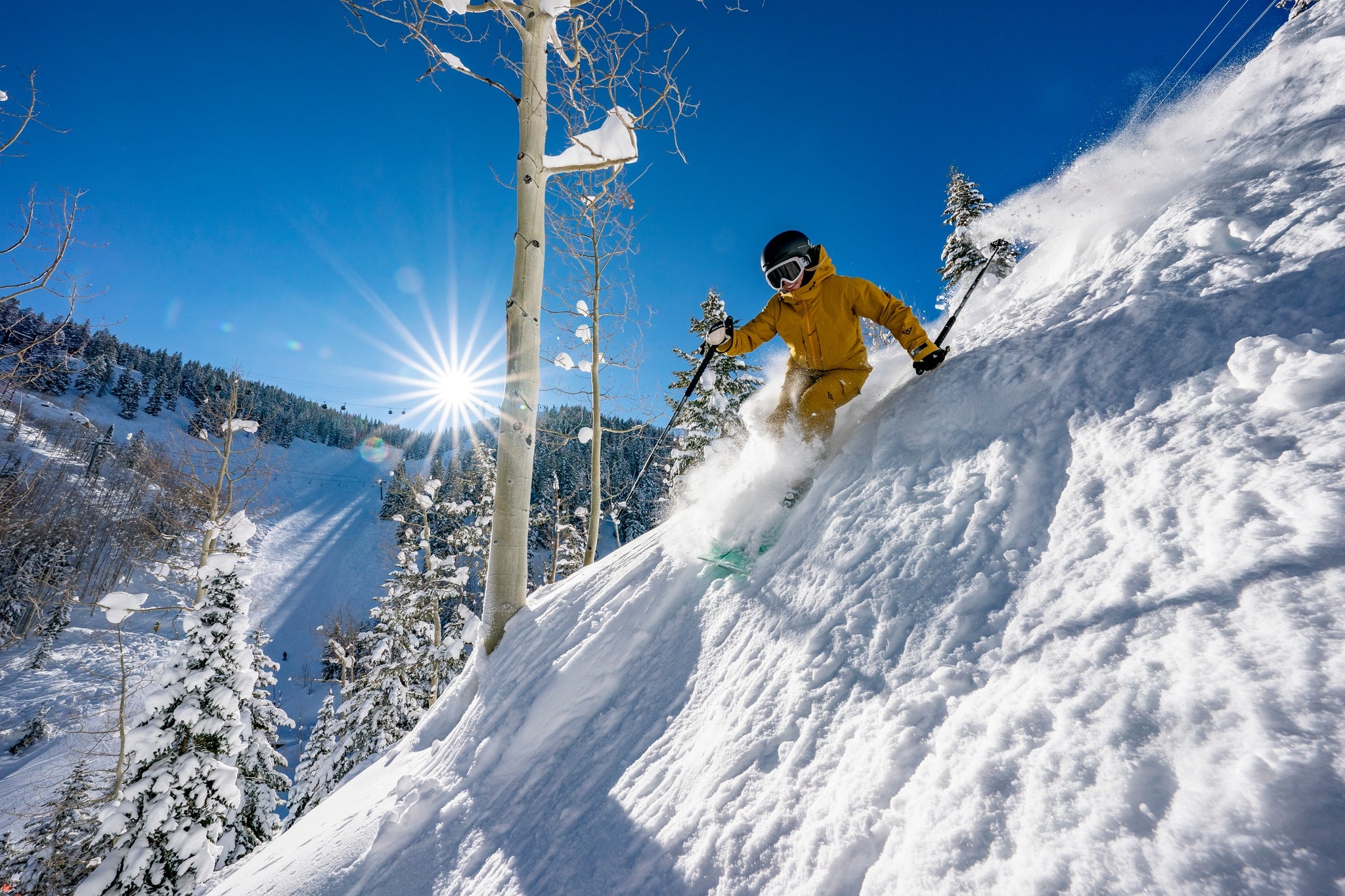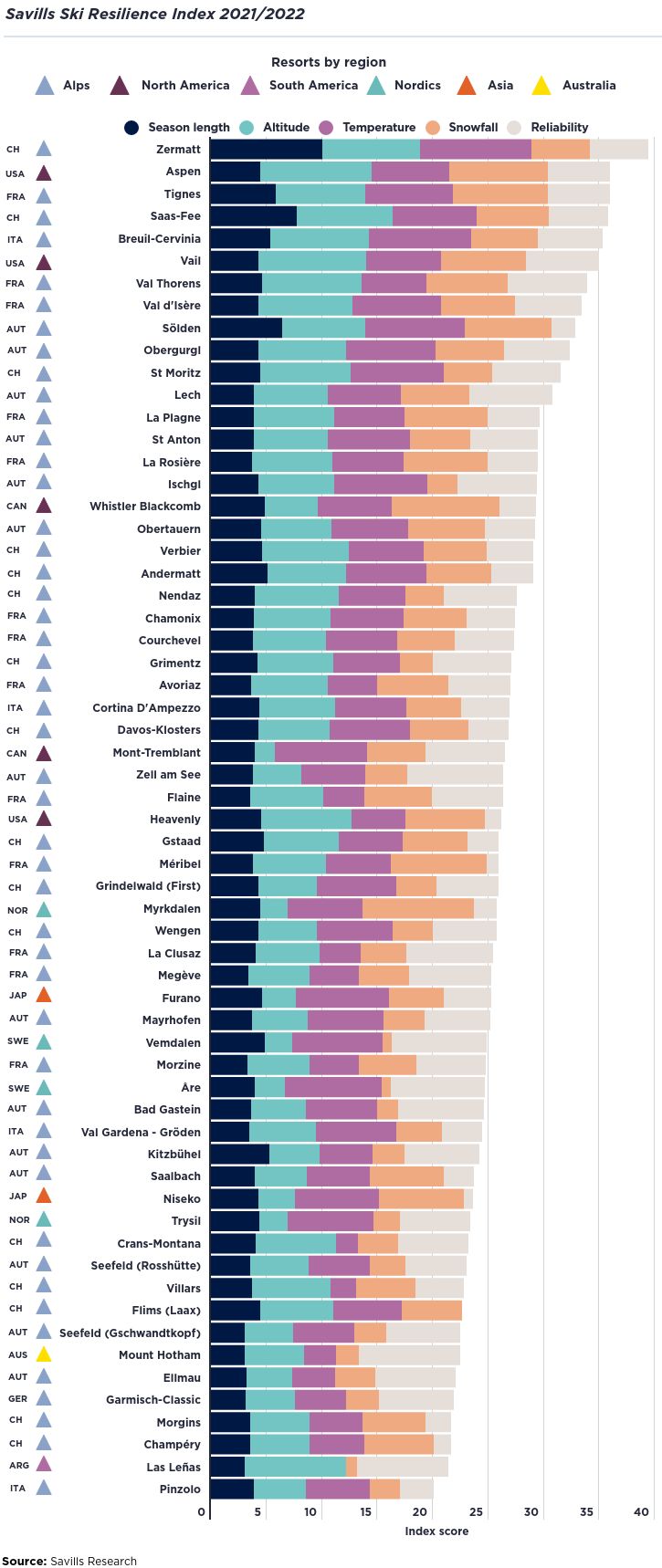
It is no secret that the snow sports industry relies on the weather. Climate change is being pushed to the top of governments’ agendas as the threat worsens. Certainly, some resorts are uniquely positioned to combat climate change better than others, but which ones do it the best?
The Savills Ski Resilience Index ranks global resorts according to their conditions’ quality, reliability, and capacity to withstand climate change.
The metrics they use for their index are:
- Snowfall
- Altitude
- Temperatures
- Reliability
- Season Length
Here are the top five in North America.
#1 Aspen, CO
#2 Vail, CO
#3 Whistler Blackcomb, BC
#4 Mont-Tremblant, QC
#5 Heavenly, CA
Interestingly, over the past decade, Aspen, Heavenly, and Vail all saw an average decrease of 2% in snowfall. Not too bad if you ask me, although I would prefer the trend to be in the opposite direction.
I also find it curious why latitude wasn’t included in the metrics. You would think along with elevation that the closer to the north or south poles the resort is located would make a difference.
A ski resort’s ability to mitigate climate change challenges going forward will be essential. See the graph below for the entire list of global resorts.

I’m surprised Jay Peak in Northeastern Vermont didn’t make the list. Billed as “the most snow in the northeast”. It’s further north than the “big name” resorts, and has lake effect snow from the international border straddling Lake Memphremagog. Bretton Woods in New Hampshire frequently has snow into May, and has logged both the coldest temperatures and highest winds measured in the continental US.
In California, Mammoth or Kirkwood would be first choice. In Colorado, Vail’s base is 8000′. Breckenridge is 9,600. A-Basin is 10,800′, not to mention a few others. In Canada, Sunshine Village would easily outdo rainy Whistler. No mention of Alta or Grand Targhee? Big Sky could also be in there.
The fact that they considered altitude shows how little the people making the report understand about what they are doing. Temperature, season length, and snowfall are the important impacts of altitude, and since they have those they should ignore altitude.
This is the biggest joke of article I’ve ever seen written!!! Are you kidding me. Vail…what. They have to upload skiers for early season already!!!??? Get your facts straight!!!!!!!!!!
Yeah I see all the factors involved in reaching this conclusion, but doesn’t pass the eye test. For Colorado- what about A-Basin, Loveland, Monarch, Breck? Vail and Aspen are barely in the mountains (relatively- look at a map), really the very beginning of the mountains in their area. South aspects can be dry any time of season. Oh well!
Also, in before that guy complains about Sierra Club!
Ummm SUNSHINE VILLAGE?!?!?
Interesting. Whistler regularly gets rain at the base, and Vail is considerably lower in elevation than most nearby ski areas.